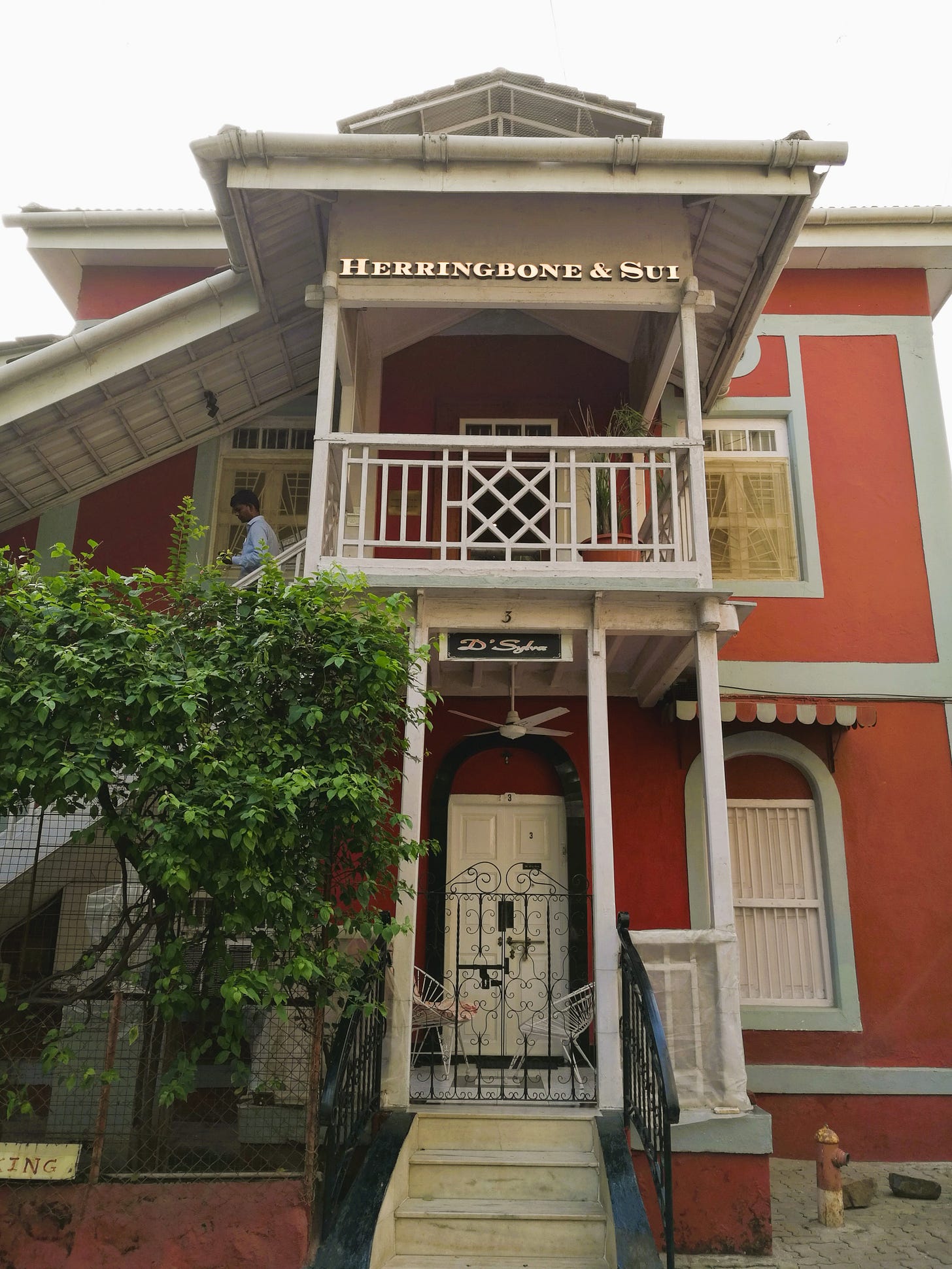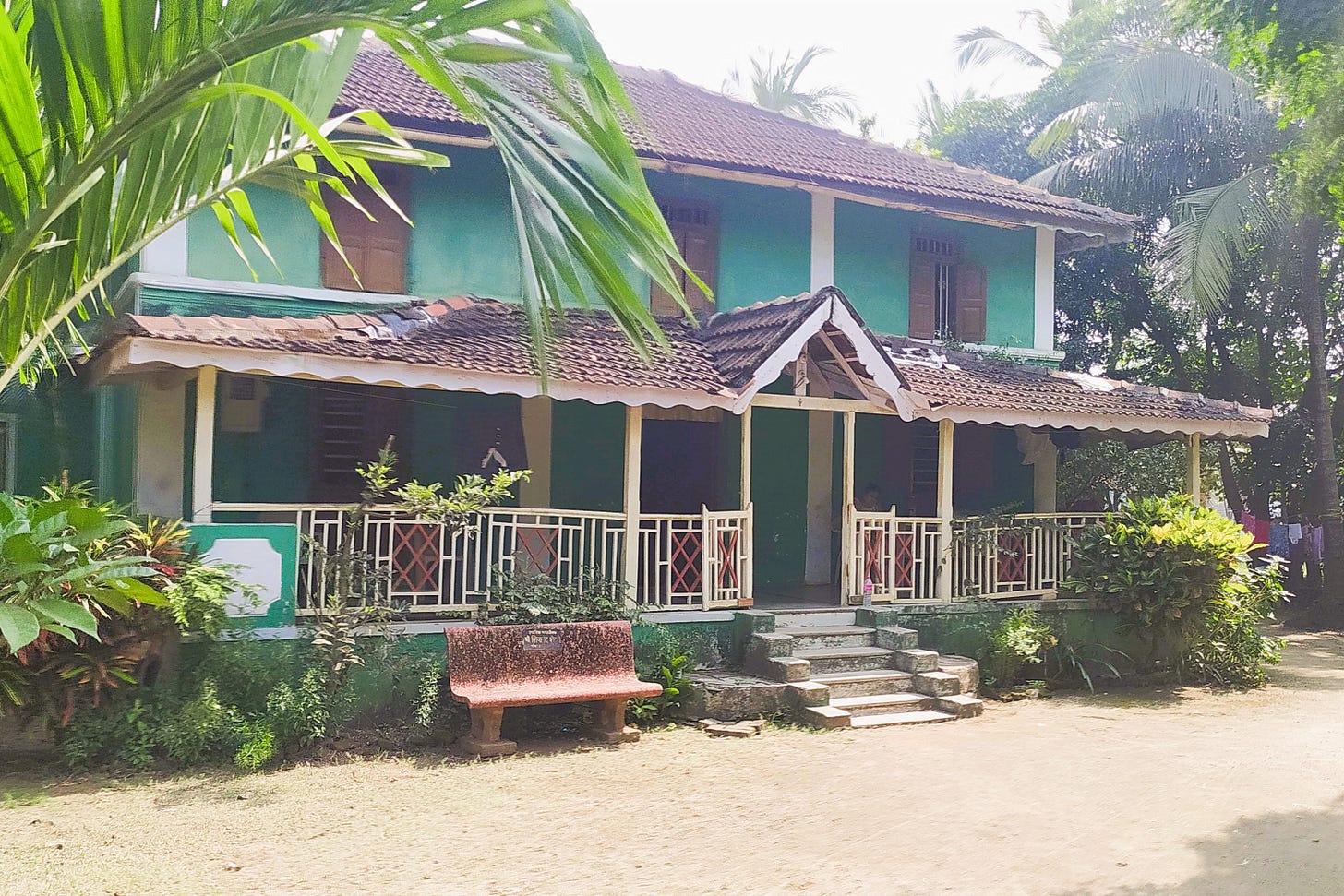Neither in nor out, the veranda in the urban villages or gaothans of Bombay stands gingerly at the threshold of the built and the unbuilt, much like a mediator, holding hands with the house on one side and the street on the other. Whilst on one hand, it create a buffer, a transition space between the private spaces inside and the buzz of the public realm outside, the veranda also serves as an important connector between two different worlds and a collector of memories in space and time.
Where walls divide, defend and isolate, a veranda connects, welcomes and blends.
The veranda derives its name from the term ‘alinda’ that describes a transition space in the ancient Indian vedic texts of Vastu Shastra. It also finds its origin in the word ‘varanda’ or railing in Portuguese and these two influences come together to form the word ‘baramda’ in Hindi and ‘veranda’ in English. It is recognised by different names in other parts of the Indian subcontinent - the otla in Gujarat, an oti or ota in Konkan, the balcao in Goa, the thinnai in Kerala and even the pila in Sinhalese, each having its own localised character and form. Verandas are also seen in other parts of the world, often termed as a patio or a porch or even a lanai. From ancient Greek porticos to Italian Roman loggias, this transition space has found resonance in buildings across geographies and time.
Pritzker winning architect B V Doshi described a veranda as “the meeting place between the sacred and the profane; the house and the street”.
A perfect place to play games, dabble in art or drift quietly into a storybook, the veranda provides the favourite hideaway for children, the best retreat to stay out of the way of busy grown ups in the house. As an in-between space, the veranda keeps the elderly and the immobile connected with the outside world. It serves as a pause point to view community festivals, exchange a greeting with a passerby, have a casual conversation with a neighbour, or to just sit alone with a cup of tea and enjoy the tropical rains. Its floor provides a canvas for rangoli, kollam and other traditional art forms, and can house plants, diwali lanterns, Christmas cribs and more.
For those who have ever spent quality time on a veranda, this pocket of shade and breeze often holds precious memories of a life in transition.
With the changing urban form of the city and the development of apartment blocks, verandas have become a rarity. The transition from street to home now happens rather abruptly across a lift or staircase lobby as homes move to upper floors. Balconies and terraces on upper floors do make an appearance, but in the quest for adequate rooms, many such spaces are enclosed.
In the city of Bombay, the romance of the veranda is now almost a thing of the past.
However, if one strolls into the tiny pockets of urban villages tucked away behind new development, one can catch glimpses of these spaces and the activities they inhabit, much like a short trip back in time when the veranda was not a relic but a place of prominence that suited the cultural context and the tropical, coastal climate of the city. Its shaded enclosure has provided respite to innumerable souls on many a humid summer afternoon, when the indoors are too stuffy and the outdoors too hot. Even today, one can find people perched on their verandas reading the newspaper, doing daily chores or just watching the world go by.
In the words of Irish poet, John Donahue “As twilight harvests all the day’s colour, may love bring you home to each other.”
The humble veranda in the fading gaothans of Bombay, provides this twilight zone for a house; effortlessly flowing into the world outside and gently drawing its beauty into the warmth of a home.
If you are still reading this, I am truly grateful. This is a reader supported publication. Do like, share, comment and subscribe to help my writing reach out to the world.







Thinnai always has a special place in my heart. Although I grew up in modern homes, my mom never failed to inculcate the importance of Thinnai and its variety of uses through our travel across TN,Kerala, Karnataka & storytelling! Grew up admiring it in silence & slyly adding a Thinnai area to most of my designs in Architecture😅
Although Thinnai is a Tamil word and the right one to be used is Charupadi in Malayalam !
Loved this post! We need more such liminal spaces between the domestic and public spaces in our contemporary architecture. Balconies are there of course but one feels at such a remove, especially the higher you are up in the sky